 Java
Java
 javaDidacticiel
javaDidacticiel
 Comment implémenter le module de fonction du code de vérification d'image Springboot
Comment implémenter le module de fonction du code de vérification d'image Springboot
Comment implémenter le module de fonction du code de vérification d'image Springboot
L'effet spécifique est le suivant :
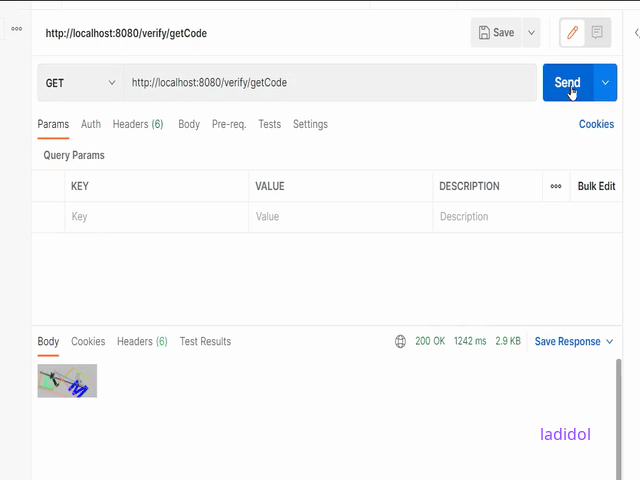
Étape 1 : Classe d'outils
Cette classe d'outils est au cœur de la génération d'images de code de vérification Vous pouvez la copier directement dans le projet sans modification ; peut être personnalisé Pour les API fournies en externe, telles que 字体大小,背景颜色,干扰线数量,高宽, vous pouvez définir les paramètres correspondants en fonction de vos propres besoins
presque chaque ligne de code a des commentaires détaillés si vous rencontrez des besoins personnalisés particuliers, vous pouvez ajuster cette classe d'outils pour y parvenir ; .
package com.feng.util;
/**
* @return null
* @author Ladidol
* @description
* @date 2022/4/11 22:15
*/
import java.awt.*;
import java.awt.geom.AffineTransform;
import java.awt.image.BufferedImage;
import java.util.Random;
/**
* 图形验证码生成
*/
public class VerifyUtil {
// 默认验证码字符集
private static final char[] chars = {
'0', '1', '2', '3', '4', '5', '6', '7', '8', '9',
'a', 'b', 'c', 'd', 'e', 'f', 'g', 'h', 'i', 'j', 'k', 'l', 'm', 'n', 'o', 'p', 'q', 'r', 's', 't', 'u', 'v', 'w', 'x', 'y', 'z',
'A', 'B', 'C', 'D', 'E', 'F', 'G', 'H', 'I', 'J', 'K', 'L', 'M', 'N', 'O', 'P', 'Q', 'R', 'S', 'T', 'U', 'V', 'W', 'X', 'Y', 'Z'};
// 默认字符数量
private final Integer SIZE;
// 默认干扰线数量
private final int LINES;
// 默认宽度
private final int WIDTH;
// 默认高度
private final int HEIGHT;
// 默认字体大小
private final int FONT_SIZE;
// 默认字体倾斜
private final boolean TILT;
private final Color BACKGROUND_COLOR;
/**
* 初始化基础参数
*
* @param builder
*/
private VerifyUtil(Builder builder) {
SIZE = builder.size;
LINES = builder.lines;
WIDTH = builder.width;
HEIGHT = builder.height;
FONT_SIZE = builder.fontSize;
TILT = builder.tilt;
BACKGROUND_COLOR = builder.backgroundColor;
}
/**
* 实例化构造器对象
*
* @return
*/
public static Builder newBuilder() {
return new Builder();
}
/**
* @return 生成随机验证码及图片
* Object[0]:验证码字符串;
* Object[1]:验证码图片。
*/
public Object[] createImage() {
StringBuffer sb = new StringBuffer();
// 创建空白图片
BufferedImage image = new BufferedImage(WIDTH, HEIGHT, BufferedImage.TYPE_INT_RGB);
// 获取图片画笔
Graphics2D graphic = image.createGraphics();
// 设置抗锯齿
graphic.setRenderingHint(RenderingHints.KEY_ANTIALIASING, RenderingHints.VALUE_ANTIALIAS_ON);
// 设置画笔颜色
graphic.setColor(BACKGROUND_COLOR);
// 绘制矩形背景
graphic.fillRect(0, 0, WIDTH, HEIGHT);
// 画随机字符
Random ran = new Random();
//graphic.setBackground(Color.WHITE);
// 计算每个字符占的宽度,这里预留一个字符的位置用于左右边距
int codeWidth = WIDTH / (SIZE + 1);
// 字符所处的y轴的坐标
int y = HEIGHT * 3 / 4;
for (int i = 0; i < SIZE; i++) {
// 设置随机颜色
graphic.setColor(getRandomColor());
// 初始化字体
Font font = new Font(null, Font.BOLD + Font.ITALIC, FONT_SIZE);
if (TILT) {
// 随机一个倾斜的角度 -45到45度之间
int theta = ran.nextInt(45);
// 随机一个倾斜方向 左或者右
theta = (ran.nextBoolean() == true) ? theta : -theta;
AffineTransform affineTransform = new AffineTransform();
affineTransform.rotate(Math.toRadians(theta), 0, 0);
font = font.deriveFont(affineTransform);
}
// 设置字体大小
graphic.setFont(font);
// 计算当前字符绘制的X轴坐标
int x = (i * codeWidth) + (codeWidth / 2);
// 取随机字符索引
int n = ran.nextInt(chars.length);
// 得到字符文本
String code = String.valueOf(chars[n]);
// 画字符
graphic.drawString(code, x, y);
// 记录字符
sb.append(code);
}
// 画干扰线
for (int i = 0; i < LINES; i++) {
// 设置随机颜色
graphic.setColor(getRandomColor());
// 随机画线
graphic.drawLine(ran.nextInt(WIDTH), ran.nextInt(HEIGHT), ran.nextInt(WIDTH), ran.nextInt(HEIGHT));
}
// 返回验证码和图片
return new Object[]{sb.toString(), image};
}
/**
* 随机取色
*/
private Color getRandomColor() {
Random ran = new Random();
Color color = new Color(ran.nextInt(256), ran.nextInt(256), ran.nextInt(256));
return color;
}
/**
* 构造器对象
*/
public static class Builder {
// 默认字符数量
private int size = 4;
// 默认干扰线数量
private int lines = 10;
// 默认宽度
private int width = 80;
// 默认高度
private int height = 35;
// 默认字体大小
private int fontSize = 25;
// 默认字体倾斜
private boolean tilt = true;
//背景颜色
private Color backgroundColor = Color.LIGHT_GRAY;
public Builder setSize(int size) {
this.size = size;
return this;
}
public Builder setLines(int lines) {
this.lines = lines;
return this;
}
public Builder setWidth(int width) {
this.width = width;
return this;
}
public Builder setHeight(int height) {
this.height = height;
return this;
}
public Builder setFontSize(int fontSize) {
this.fontSize = fontSize;
return this;
}
public Builder setTilt(boolean tilt) {
this.tilt = tilt;
return this;
}
public Builder setBackgroundColor(Color backgroundColor) {
this.backgroundColor = backgroundColor;
return this;
}
public VerifyUtil build() {
return new VerifyUtil(this);
}
}
}Étape 2 : Génération d'images :
Utiliser les paramètres par défaut :
//生成图片验证码 Object[] verify = VerifyUtil.newBuilder().build().createImage();
Génération de paramètres personnalisés :
// 这个根据自己的需要设置对应的参数来实现个性化
// 返回的数组第一个参数是生成的验证码,第二个参数是生成的图片
Object[] objs = VerifyUtil.newBuilder()
.setWidth(120) //设置图片的宽度
.setHeight(35) //设置图片的高度
.setSize(6) //设置字符的个数
.setLines(10) //设置干扰线的条数
.setFontSize(25) //设置字体的大小
.setTilt(true) //设置是否需要倾斜
.setBackgroundColor(Color.WHITE) //设置验证码的背景颜色
.build() //构建VerifyUtil项目
.createImage(); //生成图片Intégrer dans le projet springboot :
Dépendances Maven qui doivent être introduites :
<!--redis相关配置-->
<dependency>
<groupId>org.springframework.boot</groupId>
<artifactId>spring-boot-starter-data-redis</artifactId>
</dependency>
<!-- redis 连接池 -->
<!--新版本连接池lettuce-->
<dependency>
<groupId>org.apache.commons</groupId>
<artifactId>commons-pool2</artifactId>
</dependency>
<!-- 图形验证码 -->
<dependency>
<groupId>net.jodah</groupId>
<artifactId>expiringmap</artifactId>
<version>0.5.10</version>
</dependency>Obtenir le code de vérification correspondant :
service layer:
package com.feng.service;
import org.cuit.epoch.result.Result;
import javax.servlet.http.HttpServletRequest;
import javax.servlet.http.HttpServletResponse;
import java.io.IOException;
/**
* @return null
* @author Ladidol
* @description
* @date 2022/4/11 22:15
*/
public interface VerifyService {
/**
* 创建图片验证码
* @param response
* @param request
* @throws IOException
*/
void createCode(HttpServletResponse response, HttpServletRequest request) throws IOException;
/**
* 检查图片验证码
* @param
* @param
* @throws IOException
*/
Result<String> checkCode(String verificationCode);
}serviceimpl layer:
package com.feng.service.impl;
import com.feng.service.VerifyService;
import com.feng.util.RedisServiceImpl;
import com.google.common.net.HttpHeaders;
import com.feng.util.VerifyUtil;
import org.springframework.http.ResponseCookie;
import org.springframework.stereotype.Service;
import javax.annotation.Resource;
import javax.imageio.ImageIO;
import javax.servlet.http.HttpServletRequest;
import javax.servlet.http.HttpServletResponse;
import javax.servlet.http.HttpSession;
import java.awt.image.BufferedImage;
import java.io.IOException;
import java.io.OutputStream;
import java.time.Duration;
/**
* @return null
* @author Ladidol
* @description
* @date 2022/4/11 22:15
*/
@Service
public class VerifyServiceImpl implements VerifyService {
@Resource
RedisServiceImpl redisUtil;
/**
* 生成图片验证码
* @param response
* @param request
* @throws IOException
*/
@Override
public void createCode(HttpServletResponse response, HttpServletRequest request) throws IOException {
//获取session
HttpSession session = request.getSession();
//获得sessionId
String id = session.getId();
System.out.println();
ResponseCookie cookie = ResponseCookie.from("JSESSIONID",id)
.secure(true)
.domain("")
.path("/")
.maxAge(Duration.ofHours(1))
.sameSite("None")
.build();
//清除之前缓存的图片验证码
if (!String.valueOf(request.getSession().getAttribute("SESSION_VERIFY_CODE_"+id)).isEmpty()){
String getVerify = String.valueOf(request.getSession().getAttribute("SESSION_VERIFY_CODE_"+id));
redisUtil.del(getVerify);
System.out.println("清除成功");
}
//生成图片验证码,用的默认参数
Object[] verify = VerifyUtil.newBuilder().build().createImage();
//将验证码存入session
session.setAttribute("SESSION_VERIFY_CODE_" + id, verify[0]);
//打印验证码
System.out.println(verify[0]);
//将验证码存入redis
redisUtil.set((String) verify[0],id,5*60);
//将图片传给浏览器
BufferedImage image = (BufferedImage) verify[1];
response.setContentType("image/png");
response.setHeader(HttpHeaders.SET_COOKIE,cookie.toString());
OutputStream ops = response.getOutputStream();
ImageIO.write(image,"png",ops);
}
@Override
public Result<String> checkCode(String verificationCode){
if (!redisUtil.hasKey(verificationCode)){
return new Result<>(false,"验证码错误");
}
redisUtil.del(verificationCode);
return R.success();
}
}Il existe également des classes d'outils liées à Redis utilisées ici, je ne les listerai pas. Si vous le souhaitez, vous pouvez consulter mes précédentes classes d'outils de blog ici.
couche contrôleur :
@RequiredArgsConstructor est utilisé ici, c'est juste une simple injection. Si vous voulez en savoir plus, cliquez ici
package com.feng.controller;
import lombok.RequiredArgsConstructor;
import com.feng.annotation.LimitRequest;
import com.feng.service.VerifyService;
import org.springframework.web.bind.annotation.*;
import javax.servlet.http.HttpServletRequest;
import javax.servlet.http.HttpServletResponse;
import java.io.IOException;
/**
* @return null
* @author Ladidol
* @description 这里主要就是多种验证码和登录相关的东西
* @date 2022/4/11 21:46
*/
@RestController
@RequestMapping("/verify")
@RequiredArgsConstructor//这是在lombok工具给的注入方式,真帅
public class VerifyController {
private final VerifyService verifyService;
/**
* 获取图片验证码
*/
@LimitRequest(count = 5)//这个注解就是表示, 你在限制时间里(我们这里默认是六秒钟), 只能请求五次
@GetMapping("/getCode")
public void getCode(HttpServletResponse response, HttpServletRequest request) throws IOException {
verifyService.createCode(response, request);
}
@LimitRequest(count = 5)//这个注解就是表示, 你在限制时间里(我们这里默认是六秒钟), 只能请求五次
@GetMapping("/checkCode")
public Result<String> checkCode(String code){
return verifyService.checkCode(code);
}
}Ici, afin d'empêcher un accès illimité au service, nous utilisons un . accès IP restreint Nombre d'annotations @LimitRequest
Classe d'annotation sous le package d'annotations :
package com.feng.annotation;
import java.lang.annotation.*;
/**
* @return null
* @author Ladidol
* @description 限制ip访问次数注解
* @date 2022/4/11 22:15
*/
@Documented
@Target(ElementType.METHOD) // 说明该注解只能放在方法上面
@Retention(RetentionPolicy.RUNTIME)
public @interface LimitRequest {
long time() default 6000; // 限制时间 单位:毫秒
int count() default 3; // 允许请求的次数
}Classe Aspect sous le package aspect :
package com.feng.aspect;
import net.jodah.expiringmap.ExpirationPolicy;
import net.jodah.expiringmap.ExpiringMap;
import org.aspectj.lang.ProceedingJoinPoint;
import org.aspectj.lang.annotation.Around;
import org.aspectj.lang.annotation.Aspect;
import org.aspectj.lang.annotation.Pointcut;
import com.feng.annotation.LimitRequest;
import org.cuit.epoch.exception.AppException;
import org.springframework.stereotype.Component;
import org.springframework.web.context.request.RequestAttributes;
import org.springframework.web.context.request.RequestContextHolder;
import org.springframework.web.context.request.ServletRequestAttributes;
import javax.servlet.http.HttpServletRequest;
import java.util.concurrent.ConcurrentHashMap;
import java.util.concurrent.TimeUnit;
/**
* @return null
* @author Ladidol
* @description
* @date 2022/4/11 22:15
*/
@Aspect
@Component
public class LimitRequestAspect {
private static ConcurrentHashMap<String, ExpiringMap<String, Integer>> book = new ConcurrentHashMap<>();
// 定义切点
// 让所有有@LimitRequest注解的方法都执行切面方法
@Pointcut("@annotation(limitRequest)")
public void excudeService(LimitRequest limitRequest) {
}
@Around("excudeService(limitRequest)")
public Object doAround(ProceedingJoinPoint pjp, LimitRequest limitRequest) throws Throwable {
// 获得request对象
RequestAttributes ra = RequestContextHolder.getRequestAttributes();
ServletRequestAttributes sra = (ServletRequestAttributes) ra;
HttpServletRequest request = sra.getRequest();
// 获取Map对象, 如果没有则返回默认值
// 第一个参数是key, 第二个参数是默认值
ExpiringMap<String, Integer> uc = book.getOrDefault(request.getRequestURI(), ExpiringMap.builder().variableExpiration().build());
Integer uCount = uc.getOrDefault(request.getRemoteAddr(), 0);
if (uCount >= limitRequest.count()) { // 超过次数,不执行目标方法
System.out.println("接口请求超过次数!");
throw new AppException("接口请求超过次数!");
} else if (uCount == 0) { // 第一次请求时,设置有效时间
//
uc.put(request.getRemoteAddr(), uCount + 1, ExpirationPolicy.CREATED, limitRequest.time(), TimeUnit.MILLISECONDS);
} else { // 未超过次数, 记录加一
uc.put(request.getRemoteAddr(), uCount + 1);
}
book.put(request.getRequestURI(), uc);
// result的值就是被拦截方法的返回值
Object result = pjp.proceed();
return result;
}
}Afin de capturer les exceptions globales levées et de se conformer aux spécifications reposantes, nous ajoutons cette classe de traitement : La classe d'exception globale sous le package
handle :
package org.cuit.epoch.handler;
import lombok.extern.log4j.Log4j2;
import org.cuit.epoch.exception.AppException;
import org.cuit.epoch.result.R;
import org.cuit.epoch.result.Result;
import org.springframework.web.bind.annotation.ControllerAdvice;
import org.springframework.web.bind.annotation.ExceptionHandler;
import org.springframework.web.bind.annotation.ResponseBody;
@ControllerAdvice
@Log4j2
public class GlobalExceptionHandler {
@ExceptionHandler(Exception.class)
@ResponseBody
public Result error(Exception e) {
log.error(e.getMessage());
e.printStackTrace();
return R.fail(e.getMessage());
}
@ExceptionHandler(AppException.class)
@ResponseBody
public Result error(AppException e) {
log.error(e.getMessage());
e.printStackTrace();
return R.fail(e.getMessage());
}
}fichier application.yaml :
spring:
cache:
type:
redis
redis: #redis连接配置
host: 自己redis的ip地址
port: redis端口
password: 密码
jedis:
pool:
max-active: 8
max-wait: -1ms
max-idle: 500
min-idle: 0
lettuce:
shutdown-timeout: 0msLa structure finale du projet est la suivante :
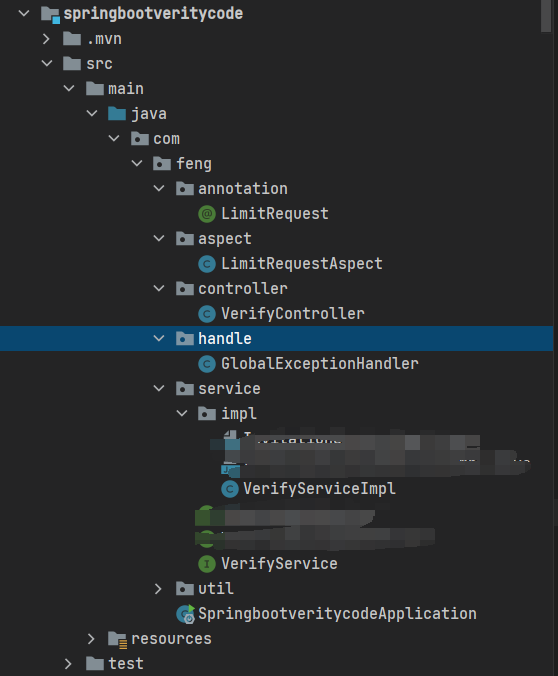
Obtenez d'abord un code de vérification :
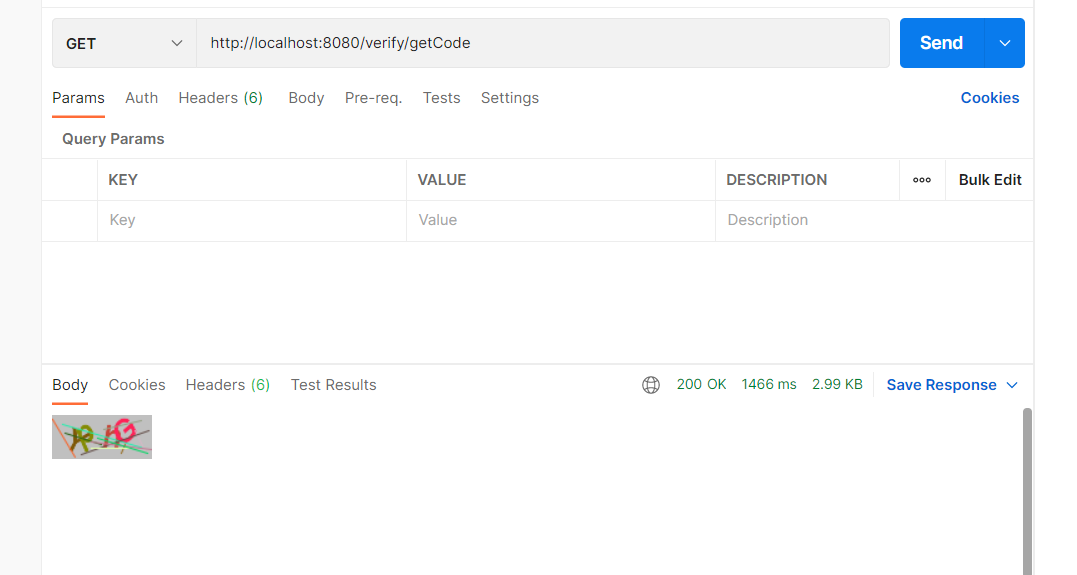
Vérification Vérifiez si elle a réussi:
Résultat de réussite:
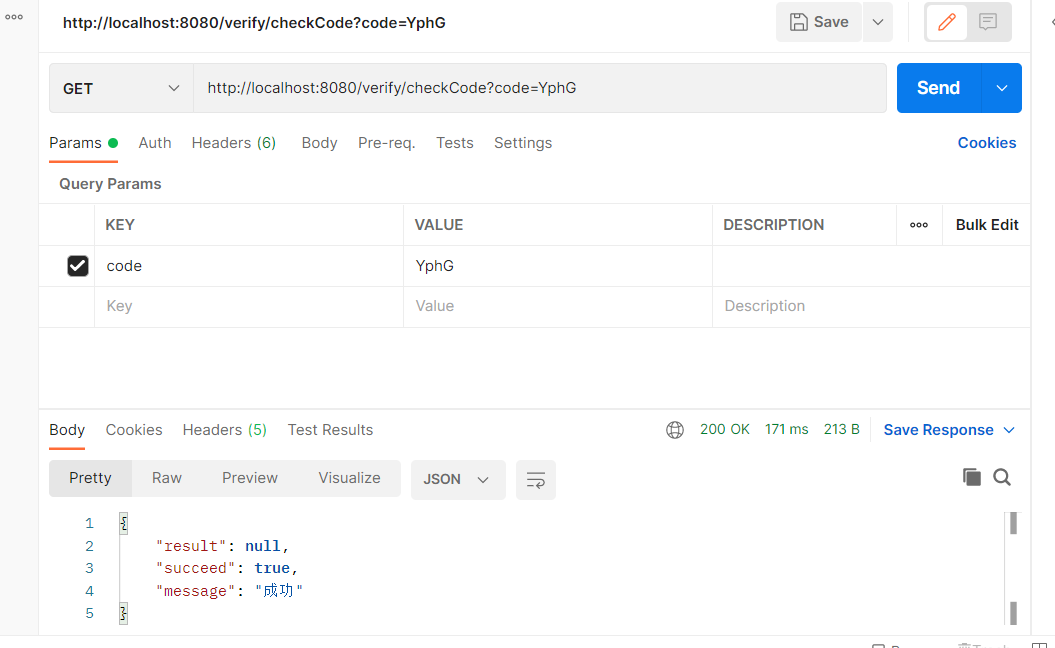
Résultat d'échec de la vérification:
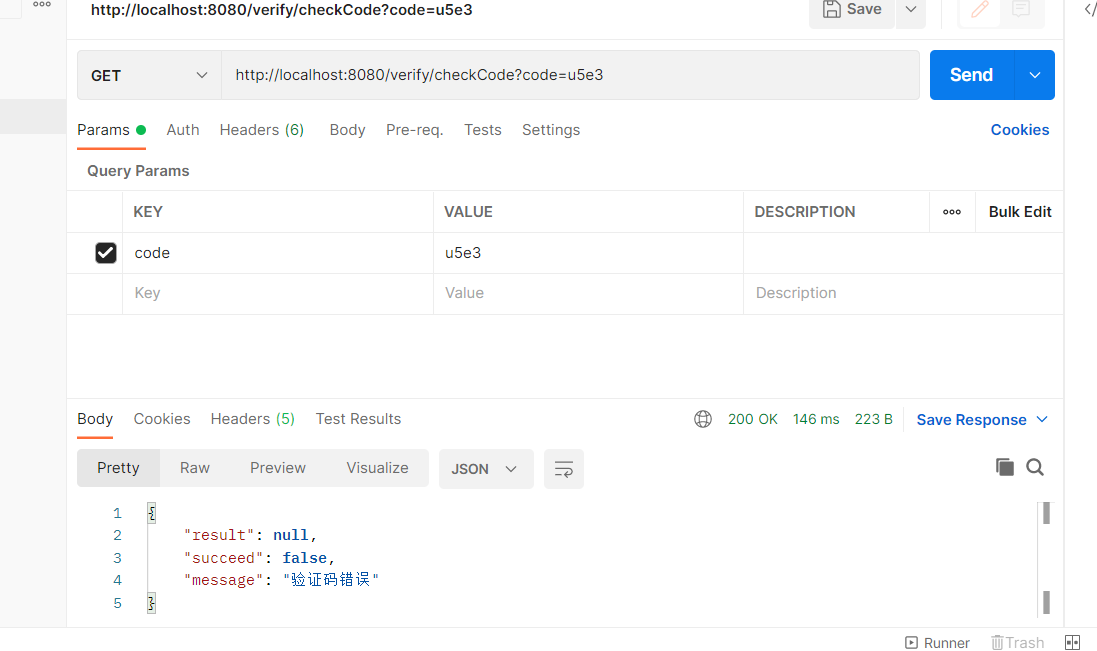
Lorsque le nombre de demandes dans le délai spécifié dépasse le nombre spécifié, une erreur peut être signalée :

Ce qui précède est le contenu détaillé de. pour plus d'informations, suivez d'autres articles connexes sur le site Web de PHP en chinois!

Outils d'IA chauds

Undresser.AI Undress
Application basée sur l'IA pour créer des photos de nu réalistes

AI Clothes Remover
Outil d'IA en ligne pour supprimer les vêtements des photos.

Undress AI Tool
Images de déshabillage gratuites

Clothoff.io
Dissolvant de vêtements AI

AI Hentai Generator
Générez AI Hentai gratuitement.

Article chaud

Outils chauds

Bloc-notes++7.3.1
Éditeur de code facile à utiliser et gratuit

SublimeText3 version chinoise
Version chinoise, très simple à utiliser

Envoyer Studio 13.0.1
Puissant environnement de développement intégré PHP

Dreamweaver CS6
Outils de développement Web visuel

SublimeText3 version Mac
Logiciel d'édition de code au niveau de Dieu (SublimeText3)
 Comment Springboot intègre Jasypt pour implémenter le chiffrement des fichiers de configuration
Jun 01, 2023 am 08:55 AM
Comment Springboot intègre Jasypt pour implémenter le chiffrement des fichiers de configuration
Jun 01, 2023 am 08:55 AM
Introduction à Jasypt Jasypt est une bibliothèque Java qui permet à un développeur d'ajouter des fonctionnalités de chiffrement de base à son projet avec un minimum d'effort et ne nécessite pas une compréhension approfondie du fonctionnement du chiffrement. Haute sécurité pour le chiffrement unidirectionnel et bidirectionnel. technologie de cryptage basée sur des normes. Cryptez les mots de passe, le texte, les chiffres, les binaires... Convient pour l'intégration dans des applications basées sur Spring, API ouverte, pour une utilisation avec n'importe quel fournisseur JCE... Ajoutez la dépendance suivante : com.github.ulisesbocchiojasypt-spring-boot-starter2 1.1. Les avantages de Jasypt protègent la sécurité de notre système. Même en cas de fuite du code, la source de données peut être garantie.
 Comment SpringBoot intègre Redisson pour implémenter la file d'attente différée
May 30, 2023 pm 02:40 PM
Comment SpringBoot intègre Redisson pour implémenter la file d'attente différée
May 30, 2023 pm 02:40 PM
Scénario d'utilisation 1. La commande a été passée avec succès mais le paiement n'a pas été effectué dans les 30 minutes. Le paiement a expiré et la commande a été automatiquement annulée 2. La commande a été signée et aucune évaluation n'a été effectuée pendant 7 jours après la signature. Si la commande expire et n'est pas évaluée, le système donne par défaut une note positive. 3. La commande est passée avec succès. Si le commerçant ne reçoit pas la commande pendant 5 minutes, la commande est annulée. 4. Le délai de livraison expire et. un rappel par SMS est envoyé... Pour les scénarios avec des délais longs et de faibles performances en temps réel, nous pouvons utiliser la planification des tâches pour effectuer un traitement d'interrogation régulier. Par exemple : xxl-job Aujourd'hui, nous allons choisir
 Comment utiliser Redis pour implémenter des verrous distribués dans SpringBoot
Jun 03, 2023 am 08:16 AM
Comment utiliser Redis pour implémenter des verrous distribués dans SpringBoot
Jun 03, 2023 am 08:16 AM
1. Redis implémente le principe du verrouillage distribué et pourquoi les verrous distribués sont nécessaires. Avant de parler de verrous distribués, il est nécessaire d'expliquer pourquoi les verrous distribués sont nécessaires. Le contraire des verrous distribués est le verrouillage autonome. Lorsque nous écrivons des programmes multithreads, nous évitons les problèmes de données causés par l'utilisation d'une variable partagée en même temps. Nous utilisons généralement un verrou pour exclure mutuellement les variables partagées afin de garantir l'exactitude de celles-ci. les variables partagées. Son champ d’utilisation est dans le même processus. S’il existe plusieurs processus qui doivent exploiter une ressource partagée en même temps, comment peuvent-ils s’exclure mutuellement ? Les applications métier d'aujourd'hui sont généralement une architecture de microservices, ce qui signifie également qu'une application déploiera plusieurs processus si plusieurs processus doivent modifier la même ligne d'enregistrements dans MySQL, afin d'éviter les données sales causées par des opérations dans le désordre, les besoins de distribution. à introduire à ce moment-là. Le style est verrouillé. Vous voulez marquer des points
 Comment résoudre le problème selon lequel Springboot ne peut pas accéder au fichier après l'avoir lu dans un package jar
Jun 03, 2023 pm 04:38 PM
Comment résoudre le problème selon lequel Springboot ne peut pas accéder au fichier après l'avoir lu dans un package jar
Jun 03, 2023 pm 04:38 PM
Springboot lit le fichier, mais ne peut pas accéder au dernier développement après l'avoir empaqueté dans un package jar. Il existe une situation dans laquelle Springboot ne peut pas lire le fichier après l'avoir empaqueté dans un package jar. La raison en est qu'après l'empaquetage, le chemin virtuel du fichier. n’est pas valide et n’est accessible que via le flux Read. Le fichier se trouve sous les ressources publicvoidtest(){Listnames=newArrayList();InputStreamReaderread=null;try{ClassPathResourceresource=newClassPathResource("name.txt");Input
 Comparaison et analyse des différences entre SpringBoot et SpringMVC
Dec 29, 2023 am 11:02 AM
Comparaison et analyse des différences entre SpringBoot et SpringMVC
Dec 29, 2023 am 11:02 AM
SpringBoot et SpringMVC sont tous deux des frameworks couramment utilisés dans le développement Java, mais il existe des différences évidentes entre eux. Cet article explorera les fonctionnalités et les utilisations de ces deux frameworks et comparera leurs différences. Tout d’abord, découvrons SpringBoot. SpringBoot a été développé par l'équipe Pivotal pour simplifier la création et le déploiement d'applications basées sur le framework Spring. Il fournit un moyen rapide et léger de créer des fichiers exécutables autonomes.
 Comment implémenter Springboot+Mybatis-plus sans utiliser d'instructions SQL pour ajouter plusieurs tables
Jun 02, 2023 am 11:07 AM
Comment implémenter Springboot+Mybatis-plus sans utiliser d'instructions SQL pour ajouter plusieurs tables
Jun 02, 2023 am 11:07 AM
Lorsque Springboot+Mybatis-plus n'utilise pas d'instructions SQL pour effectuer des opérations d'ajout de plusieurs tables, les problèmes que j'ai rencontrés sont décomposés en simulant la réflexion dans l'environnement de test : Créez un objet BrandDTO avec des paramètres pour simuler le passage des paramètres en arrière-plan. qu'il est extrêmement difficile d'effectuer des opérations multi-tables dans Mybatis-plus. Si vous n'utilisez pas d'outils tels que Mybatis-plus-join, vous pouvez uniquement configurer le fichier Mapper.xml correspondant et configurer le ResultMap malodorant et long, puis. écrivez l'instruction SQL correspondante Bien que cette méthode semble lourde, elle est très flexible et nous permet de
 Comment SpringBoot personnalise Redis pour implémenter la sérialisation du cache
Jun 03, 2023 am 11:32 AM
Comment SpringBoot personnalise Redis pour implémenter la sérialisation du cache
Jun 03, 2023 am 11:32 AM
1. Personnalisez RedisTemplate1.1, mécanisme de sérialisation par défaut RedisAPI. L'implémentation du cache Redis basée sur l'API utilise le modèle RedisTemplate pour les opérations de mise en cache des données. Ici, ouvrez la classe RedisTemplate et affichez les informations sur le code source de la classe. Déclarer la clé, diverses méthodes de sérialisation de la valeur, la valeur initiale est vide @NullableprivateRedisSe
 Comment obtenir la valeur dans application.yml au Springboot
Jun 03, 2023 pm 06:43 PM
Comment obtenir la valeur dans application.yml au Springboot
Jun 03, 2023 pm 06:43 PM
Dans les projets, certaines informations de configuration sont souvent nécessaires. Ces informations peuvent avoir des configurations différentes dans l'environnement de test et dans l'environnement de production, et peuvent devoir être modifiées ultérieurement en fonction des conditions commerciales réelles. Nous ne pouvons pas coder en dur ces configurations dans le code. Il est préférable de les écrire dans le fichier de configuration. Par exemple, vous pouvez écrire ces informations dans le fichier application.yml. Alors, comment obtenir ou utiliser cette adresse dans le code ? Il existe 2 méthodes. Méthode 1 : Nous pouvons obtenir la valeur correspondant à la clé dans le fichier de configuration (application.yml) via le ${key} annoté avec @Value. Cette méthode convient aux situations où il y a relativement peu de microservices. Méthode 2 : En réalité. projets, Quand les affaires sont compliquées, la logique





